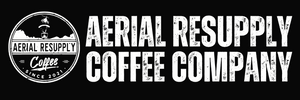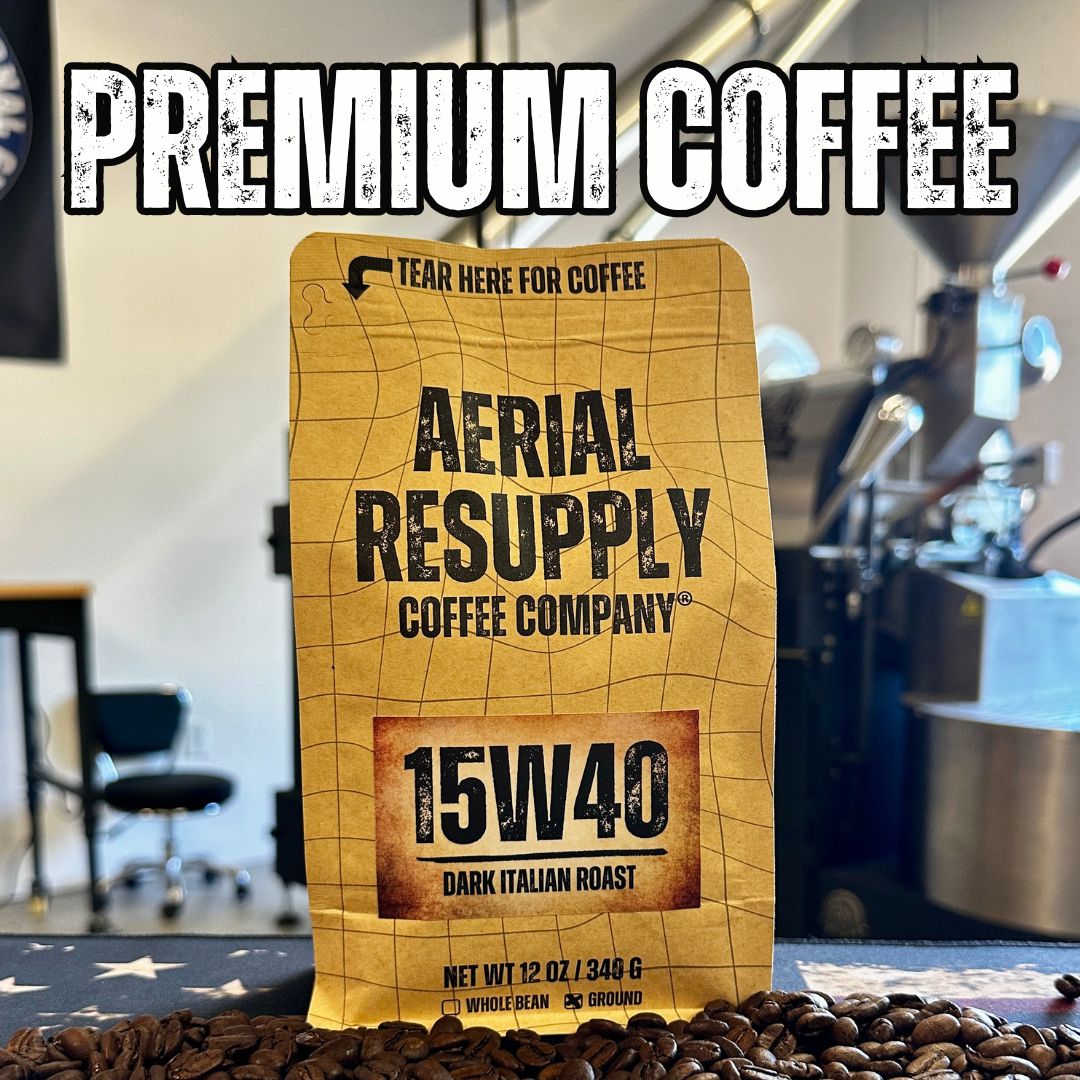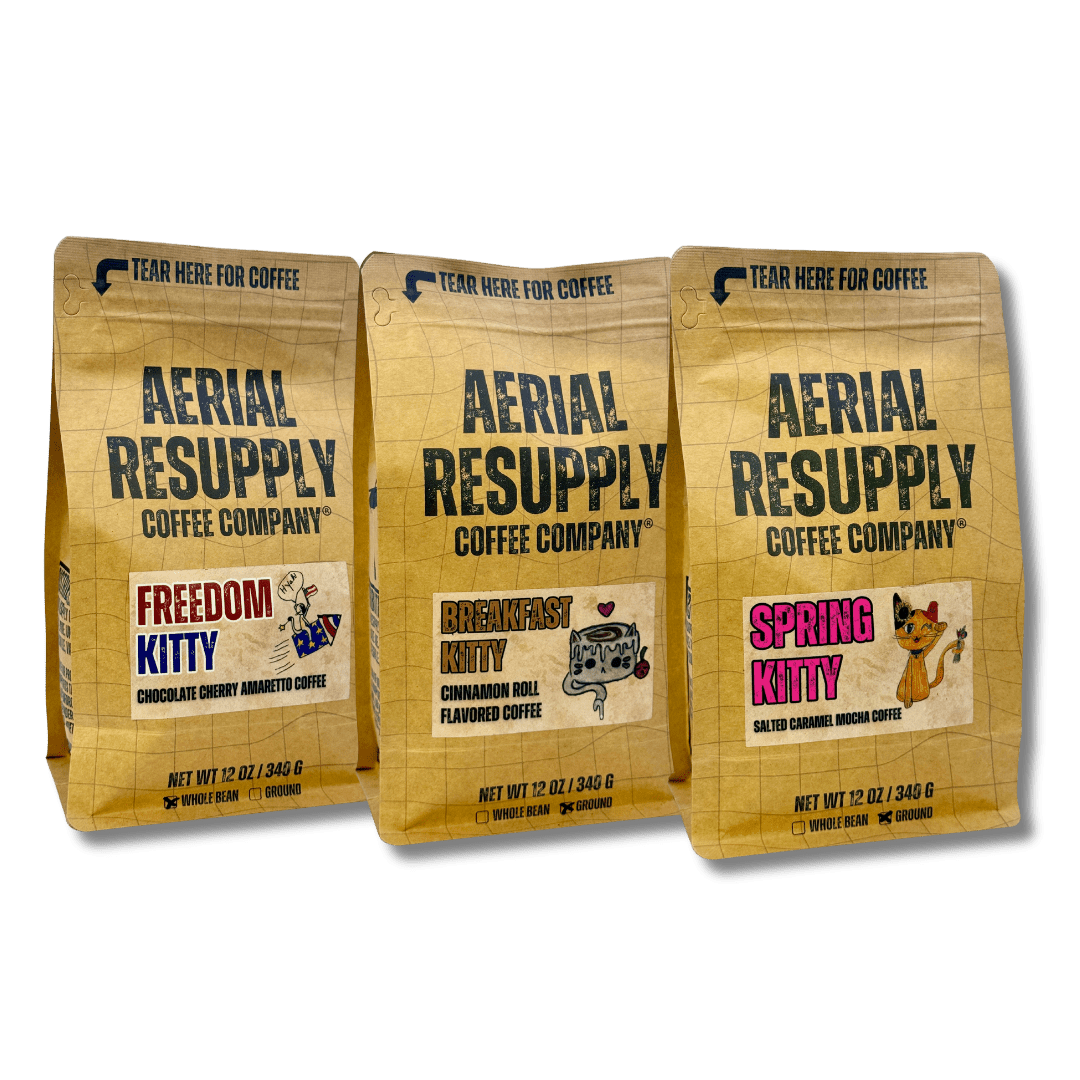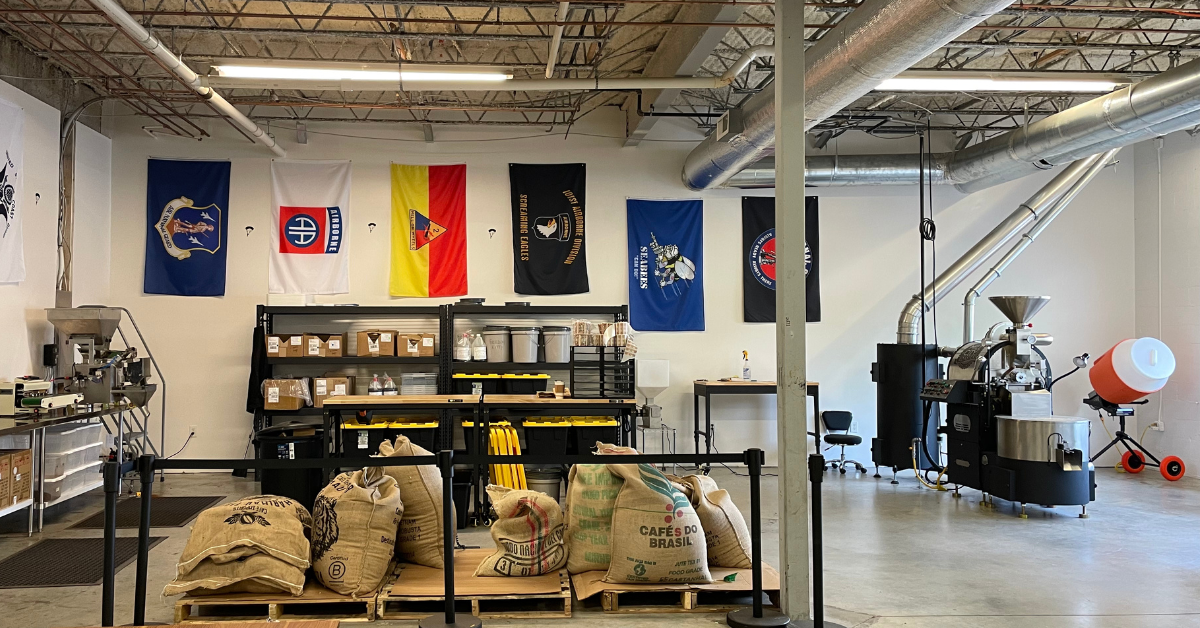How to Brew the Best Coffee in the Field
By Mike Klemmer, Founder of Aerial Resupply Coffee — veteran, retired Army logistician, and lifelong believer that caffeine wins wars.
Anyone who’s served knows this truth: being deployed sucks — and bad coffee makes it worse. Whether you’re on a dusty airstrip in Kuwait, huddled inside a tent at NTC, or halfway up a ridgeline waiting for sunrise, your options usually boil down to instant coffee packets, burned percolator sludge, or a canteen full of questionable brown water. None of that should be the hill you die on before 0600.
Good news — you can brew damn good coffee anywhere. All it takes is the right mindset, a little field ingenuity, and the right gear. In this guide, I’ll show you how to make the perfect cup of coffee in the field using everything from a Jetboil to a plastic bottle — plus a few pro-tips from my own deployments. And if you want to take it up a notch, I’ll show you why our Aerial Resupply Coffee Brew Kit is the best way to turn any FOB into a forward operating barista station.
The Mission: Coffee, Anywhere
Coffee in the field isn’t about luxury — it’s about morale. It’s the five minutes of sanity before comms come alive, the warm silence after a night patrol, the little ritual that reminds you you’re still human. But when you’re far from the espresso machine and your resupply is one MRE away from despair, you’ve got to adapt. Logistics wins wars — and it also wins coffee.
Jetboil Method: Fast, Hot, and Deployment-Proof
If you’ve got access to a Jetboil, you already have the foundation for great coffee. That little stove has saved more lives and morale than we’ll ever know. Here’s how to make it work like a pro:
Step 1 — The Water Ratio
For every 8 ounces of water, use about 2 tablespoons (10 grams) of ground coffee. Don’t eyeball it — measure it once, memorize it forever. If you’re rocking our Lifeline Light Roast, this ratio hits perfectly for a crisp, balanced cup even when your canteen cup still smells like CLP.
Step 2 — Grind Size
If you packed a grinder — and our Brew Kit includes one — go for a medium-coarse grind. Think sea salt, not dust. Too fine and you’ll end up drinking coffee mud thicker than the motor pool after a storm.
Step 3 — Brewing
Boil your water, kill the flame, and let it sit for 30 seconds. Pour slowly over your grounds through a paper filter, bandana, or field-made funnel. Let gravity do its thing. Stir once, wait a minute, and you’ve got real coffee — not reconstituted sadness.
Step 4 — Drink Like You Mean It
Don’t rush it. Take a second. Smell the roast. That aroma? That’s freedom, discipline, and sanity — all in one cup. And if you want to make it last longer, pour it into your thermos or Nalgene; it’ll stay warm for hours and keep you sharper than that LT with the brand-new compass he doesn’t know how to use.
Instant Coffee: When There’s No Other Option
Let’s be real. Sometimes the luxury of ground coffee is miles away, and you’re left with a crumpled MRE packet labeled “Coffee, Instant, Type III.” It’s fine — we’ve all been there. But if you’re smart, you can still make it taste decent.
- Step 1: Heat water — Jetboil, canteen, even exhaust heat if you’re desperate.
- Step 2: Add one packet for 6–8 ounces of water. Stir like your life depends on it.
- Step 3: (Optional) Add a dash of cocoa powder or a pinch of salt to cut the bitterness.
Bonus tip: if you’ve got a few MOAB Medium Roast K-cups laying around, crack one open and pour the grounds into your cup. You’ll get real flavor without the sludge. It’s not gourmet, but it beats anything out of a pouch.
The Brew Kit: Logistics Meets Flavor
For those who want the real thing — or if you’re a friend, spouse, or parent who wants to send a little comfort to someone deployed — the Aerial Resupply Coffee Brew Kit is mission-essential gear.
Inside the kit, you’ll find everything you need for perfect field coffee:
- 6x 2oz bags of premium whole-bean coffee (variety pack)
- Compact hand grinder — no batteries, no nonsense
- Reusable pour-over filters — lightweight and tactical-grade
- Field instructions printed on waterproof card stock (because we get it)
It’s the same setup I wish I’d had on deployment. It’s compact, durable, and makes you feel like a human being again — which is half the battle out there.
Best ARC Roasts for the Field
Every roast we make at Aerial Resupply Coffee is designed for mission performance — but here’s how to choose the right one for your situation:
- Firewatch Medium Roast: Smooth, balanced, and reliable. The all-rounder for long shifts and late-night guard duty.
- 15W40 Dark Roast: Bold, full-bodied, and built for motor-pool heroes who need torque before breakfast.
- Lifeline Light Roast: Clean, bright, and ideal for early mornings when you want flavor without heaviness.
Tips From the Field: Veteran Edition
Over 20 years in uniform taught me one thing: ingenuity keeps you alive. Coffee’s no different. Here are a few lessons learned the hard way:
- Use clean water. Always. No one likes CLP-flavored espresso.
- Don’t over-boil. If the water’s violently bubbling, let it cool before brewing. Coffee isn’t ramen.
- Store beans airtight. Ziplocks, ammo cans, or Pelican cases — whatever works. Oxygen kills freshness faster than humidity kills morale.
- Share your brew. Nothing builds unit cohesion faster than handing your battle buddy a real cup after a 12-hour patrol.
For the Home-Front Support Crew
If you’ve got someone deployed, you already know the small things matter. A letter. A care package. A reminder of home. Coffee is one of the simplest, most powerful ways to show support — it’s comfort that fits in a ruck.
We’ve partnered with dozens of families who send Aerial Resupply Coffee downrange through APO/FPO every month. Each box carries a little message: We see you. Stay sharp. You’re not forgotten.
Our packaging holds up in any climate, and our beans arrive ready to grind and brew, even after weeks in transit. Whether you choose Firewatch for reliability or 15W40 for a darker punch, you’re sending more than caffeine — you’re sending morale.
Why Good Coffee Matters on Deployment
It’s not just about staying awake — it’s about staying grounded. Good coffee improves focus, stabilizes mood, and gives a sense of normalcy in places that are anything but normal. Studies from the U.S. Department of Veterans Affairs show that caffeine, when consumed in moderation, enhances alertness and cognitive performance without the crash of energy drinks. And when it’s brewed from real beans — not instant powder — it delivers antioxidants that help your body recover from stress, heat, and long hours.
In short: good coffee keeps you operational.
Field Coffee: A Symbol of Resilience
When I look back at my time in uniform, I remember the long nights — the hum of generators, the taste of dust, and the smell of burnt coffee on a Coleman stove. It wasn’t the quality that mattered; it was the connection. Those early-morning brews weren’t just caffeine. They were conversation, leadership, and sanity. That’s what we aim to preserve at Aerial Resupply Coffee — that shared moment of strength before the mission starts.
So whether you’re on deployment, training in the field, or camping with your family, make every cup count. Brew it with pride. Brew it with discipline. And if you need a little logistical support, you know where to find us.
Load up your Brew Kit. Stay Caffeinated. Stay Mission Ready.






